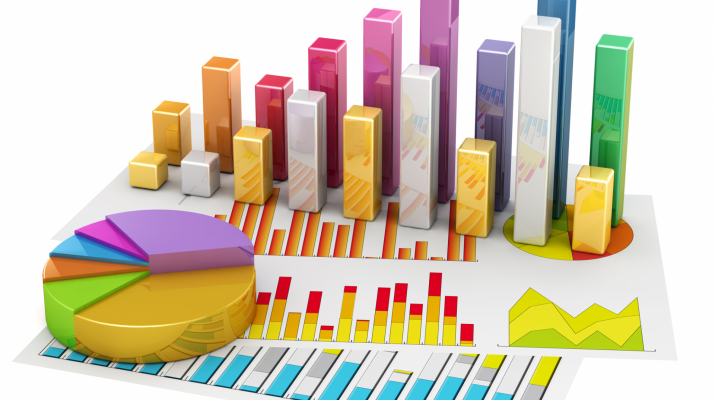Statistics are everywhere! Statistics help us better appreciate the world.
Statistics, which we encounter in all areas of daily life such as health, economy, finance, marketing, management, and commerce, actually emerged as a result of people’s better interpretation of events and phenomena by integrating with numbers. The role of statistics, which is called the system of ideas about life, in the processes of change based on the concept of innovation, which is now an indispensable part of our lives, is an indisputable fact. The size of studies based on numerical data continues to increase in this sense.
Statistics is science for making predictions as a result of organizing, analyzing, evaluating, and interpreting the results based on the analysis in order to bring the data collected by scientific research methods into a meaningful whole. Statistics is a science-based on various techniques and methods.
“Statistics” as described by the American Statistical Association (ASA) “is the science of learning from data, and of measuring, controlling and communicating uncertainty.”
According to Wikipedia:
“Statistics is the discipline that concerns the collection, organization, analysis, interpretation and presentation of data.”
According to Merriam-Webster’s Collegiate Dictionary:
“Statistics is a branch of mathematics dealing with the collection, analysis, interpretation, and presentation of masses of numerical data.”
Statistics helps us with decision-making processes. The relation between data and statistics is very powerful. Because it can be defined as “the science of learning from data.”
Scientists try to clarify questions using rigorous techniques and precise observations. These observations – obtained from the likes of field data, studies, and analyses- form the backbone of statistical research and are called data. Statistics is the study of how best to gather, examine, and draw conclusions from data.
The purpose of data collection in statistical science;
* Obtaining comprehensive information about research done
* Determination of performance variables.
* Determination of appropriate methods for decision options
* Making predictions to satisfy the need for curiosity
* To be able to make reports by systematizing the data.
Statistics is the method used to extract information from the obtained data. By helping us reach valid information, it forms the basis of decision-making and predictive mathematical models in this sense. It makes complex data simpler and more meaningful.
The stages of statistical methods are:
- Collection of information
- Making information suitable for statistical analysis
- Presentation of data
- Statistical analysis
There are two different views on the origin of the word statistics. The first claims to derive from the Latin root “status” meaning “state” or “situation”. The second view argues that it is derived from the word “statista”, which comes from the root “stato” and means state in Italian. Whatever background it comes from, the important thing is to be aware that statistics have a long history.
While performing our daily activities, we cannot remain indifferent to the events happening around us. For example, what will be the result of a performance evaluation made about you at the end of the month? Or what kind of a relationship is there between obeying the traffic rules and education? What are the effects on the climate and environment of the world’s population increase each year?
We learn the answers to these and many similar questions with mathematical models based on numerical values. Here, the importance of statistics is the process of searching for reliable answers to questions that we do not know the answer to or have no knowledge of at all. The purpose of statistics is to classify and compare the data obtained by understanding the numerical characteristics of any phenomenon and event. So that everyone can understand.
In order to talk about statistics, there is a need for data and quantitative and qualitative variables, which are the way they are expressed. Statistics is like a ladder for science. It prepares the ground for us to reach the next step, not to dwell on it all the time. It allows us to make continuous development and improvements.
It helps us make predictions and make decisions about the future by analyzing numerical data about past and present events. Statistics can take different names according to the fields in which it is applied. When used in economics it is called econometrics, when used in biology sociology, and psychology it is called biometrics, sociometry, and psychometry.
What Are the Most Common Uses of Statistics?
Business Life: With the increasing competition in today’s companies, various studies are carried out through statistical methods as a result of market data and data on consumer behavior measurement. As a result of systematic studies using statistical methods in line with the developments in the production and service sector, it is ensured that the amount of products belonging to the sector is determined and quality control is carried out easily.
Economy: Resources, employment rates, national income distribution and production amount are measured and analyzed.
Mathematics: Statistical methods such as averaging based on estimates and probability distributions are widely used in mathematics.
Banking: Statistical analyzes are made to clarify probability calculations and estimations based on deposit figures.
Management: Estimating that there may be transactions from different sources with the expected income and expenses, and accordingly the budget is created. Statistical data and analysis are used to determine future sales and growth potential.
Accounting and Auditing: It is important in determining data such as financial statements, cash flow charts, graphs, and estimated income statements.
Social Sciences and Natural Sciences: In the analysis and analysis of results; It is used in science branches such as biology, sociology, psychology, physics, chemistry, and mathematics.
Astronomy: It is used in the measurement and analysis of data collected from spacecraft in space sciences.
Apart from these, it is frequently used in the field of health, in stock analysis, in polls in elections, and in determining demographic characteristics related to the census.

